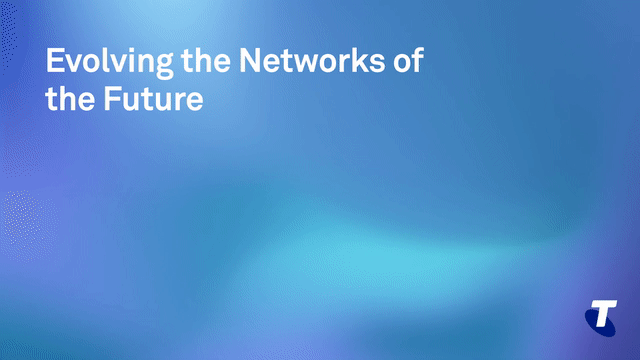Evolving the networks of the future

The demands placed on networks today is a familiar story for anyone working in telecommunications right now.
Traffic over Telstra’s fixed networks has grown 63 times in the last ten years and we expect that to grow by 33 times year-on-year between now and 2024. It’s the same on mobile networks: mobile traffic is up 93 times in the last decade.
The trend is accelerating due, in part, to improving device capabilities and network technologies. Using the fastest device available, the theoretical speed on Telstra’s mobile networks has increased 100 times between 2009 and 2019. If you extend the date range to 2008 - the year we deployed a new network technology - the theoretical speed increase almost doubles again.
These examples demonstrate the effect of our technology decisions and the importance of getting them right.
The next decade
Over the next five to ten years, we are evolving our networks by focusing on improving security and resilience and transitioning to the 5G mobile network.
In terms of security and resilience, the effect of a network interruption on users and customers is greater than ever. The moment the network goes down, the impact is felt on a large scale. While security is as much of a human issue as a technical one, the network is critical in securing data in transit and at data centres and end points. We have already made great strides in improving network availability to take out 70 per cent of customer downtime hours in the last three years.
Edge computing is one of the emerging technologies, we are working on to help improve the security and resilience of our networks further. Edge computing enables us to break up and distribute network and infrastructure. Each end point will contain some network functionality, some IT functionality and some of the customer’s functionality, meaning there is no need to transport data to central points all the time. What is the benefit for organisations? There are many different use cases. For example, banks could run their functions locally rather than sending data to a central data centre. In-branch services will continue to work if the network goes down. This is just one example; edge computing will apply to many more situations.
How do we deliver network evolution?
We are focusing our investment in a number of key areas. Some of the most important are as follows:
1. Our world class subsea cable network, which enables us to take traffic out of Australia to another point of presence around Asia Pacific in a secure, manageable way.
2. A next-generation optical transport layer. This layer helps to improve resilience by automating fail-over processes. Our project to roll out next-gen optical transport all over Australia is almost complete.
3. Simplified reusable network components to enable near real-time, on demand capacity upgrades and activations. This is the future of networks, and one in which Telstra is taking a leading role.
4. A better Operational support system for enhanced monitoring. We currently generate hundreds of millions of alarms every minute and we aim to pass these alarms through an AI filter, which can evaluate what the smallest alarm tells us about what will happen months from now. It will enable us to predict events such as component failure and take preventative action.
5. Software-defined networking and network function virtualisation. These technologies enable us to break up and commoditise the network layers and spread functionality across multiple points, removing the need for duplicate equipment.
5G - the next stage in mobile network evolution
As already announced, we are closing the 3G network to free up spectrum for 5G services. 3G accounts for around six per cent of traffic today but it is declining. The main use for 3G is to assist customers from dropping calls or losing data services. 3G occupies the 850Mhz spectrum, a low band spectrum enabling signals to pass through walls. This spectrum will be vital to delivering 5G services.
As part of the 3G closure, we are upgrading 3G-only areas in our footprint to 4G services. Voice over LTE will be enabled for customers on the Telstra Wholesale Mobile Evolution platform before the exit. Planning for a Telstra Wholesale 5G capability is now underway.
Our action and the investments, we are making to evolve our networks will ensure that our customers are well-placed to succeed as the demand for their services continues to grow beyond 2020.
